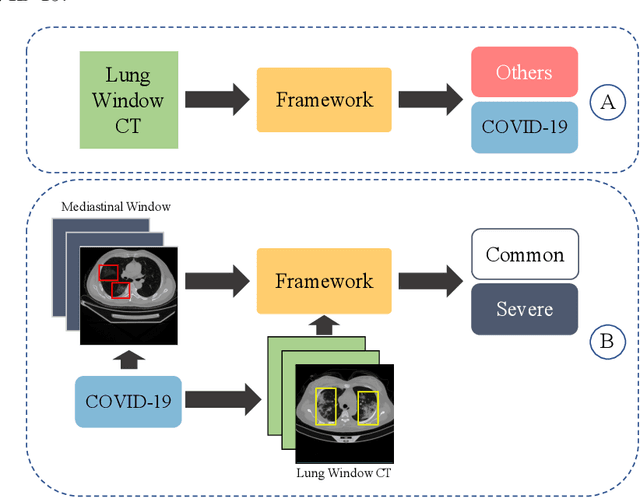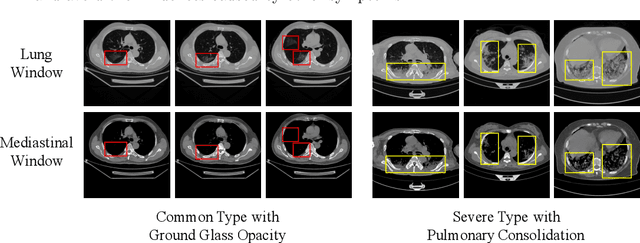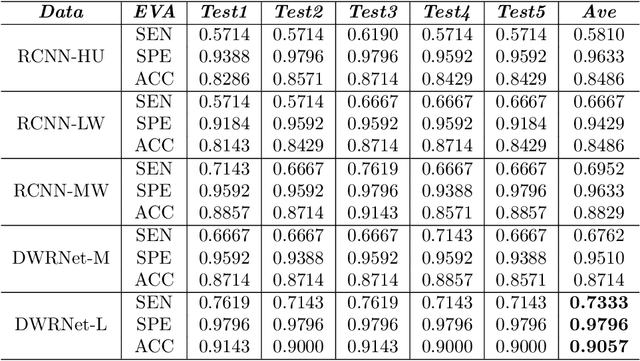Dual Windows Are Significant: Learning from Mediastinal Window and Focusing on Lung Window
Paper and Code
Jun 08, 2022



Since the pandemic of COVID-19, several deep learning methods were proposed to analyze the chest Computed Tomography (CT) for diagnosis. In the current situation, the disease course classification is significant for medical personnel to decide the treatment. Most previous deep-learning-based methods extract features observed from the lung window. However, it has been proved that some appearances related to diagnosis can be observed better from the mediastinal window rather than the lung window, e.g., the pulmonary consolidation happens more in severe symptoms. In this paper, we propose a novel Dual Window RCNN Network (DWRNet), which mainly learns the distinctive features from the successive mediastinal window. Regarding the features extracted from the lung window, we introduce the Lung Window Attention Block (LWA Block) to pay additional attention to them for enhancing the mediastinal-window features. Moreover, instead of picking up specific slices from the whole CT slices, we use a Recurrent CNN and analyze successive slices as videos. Experimental results show that the fused and representative features improve the predictions of disease course by reaching the accuracy of 90.57%, against the baseline with an accuracy of 84.86%. Ablation studies demonstrate that combined dual window features are more efficient than lung-window features alone, while paying attention to lung-window features can improve the model's stability.
 Add to Chrome
Add to Chrome Add to Firefox
Add to Firefox Add to Edge
Add to Edge